The 2013 Ross Dependency stamp issue was not to be missed. It told the story of the Antarctic food web, which enables a vast array of wildlife in the Ross Dependency to survive.
Issue information
Antarctica is the highest, driest, windiest, emptiest, coldest place on Earth. It’s a desolate land to which few people venture, but a place where, despite all the odds, millions of animals thrive.
This striking stamp issue highlighted one of the marvels of Antarctica: its ‘food web’, which enables a vast array of wildlife to find the sustenance they need to survive. The key to its success – and the element that enables every one of these animals to endure – is a tiny, delicately pink crustacean called krill.
The stamps illustrated the Antarctic krill and four unique species whose lives depend on it. They all inhabit the Ross Dependency, an area of Antarctica administered by New Zealand and home to the scientific communities of Scott Base and McMurdo Station.
Miniature Sheet and More!
For almost every animal that lives in Antarctica, the ‘three degrees of krill’ rule applies: you are krill, or you eat krill, or your food eats krill.
The 2013 Ross Dependency - Antarctic Food Web miniature sheet celebrated this ‘hero’ of the continent, while the two first day covers depicted the Ross Sea – a huge bay cutting into the Antarctic continent that has the most pristine marine ecosystem on Earth.
Presentation Pack
For even more about the stamps and the complex ecosystem that makes up the Antarctic food web, the 2013 Ross Dependency presentation pack included the five gummed stamps, the miniature sheet and the first day cover, along with more information about the animals and their extraordinary stories of survival.
The Collector’s Collectable
Every year, New Zealand Post deems a select group of stamp issues as deserving of limited edition status – and this was one of them. When you ordered yours, you acquired items that were exclusive to this sought-after collectable, including a specially designed first day cover signed by Rob Fenwick CNZM, Chair of Antarctica New Zealand, a unique numbered imperforate miniature sheet and colour separations of the $2.90 stamp.
You could also learn more about the intricacies of the Antarctic food web in a booklet written by Rob Fenwick.
Product Listing for 2013 Ross Dependency - Antarctic Food Web
| Image | Title | Description | Price |
|---|---|---|---|
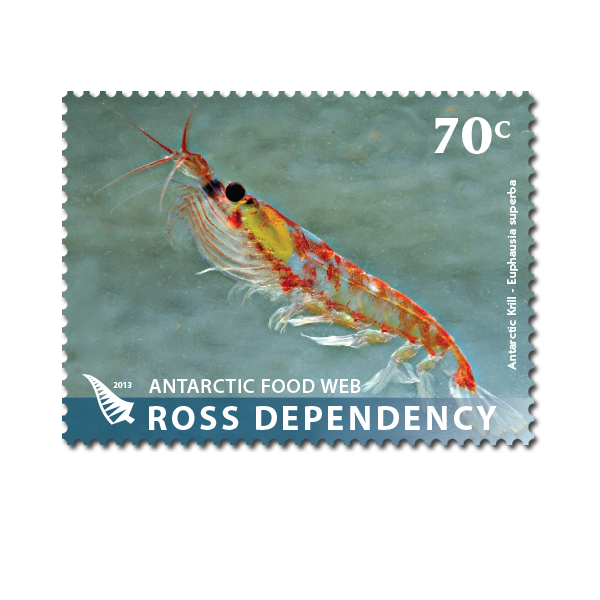 |
Single Stamp |
Single 70c 'Antarctic Krill (Euphausia superba)' gummed stamp. Krill are an essential food source for most Antarctic animals. Measuring just six centimetres long and living for up to six years, they gather in swarms, with some containing up to 30,000 individuals per cubic metre. With a total biomass of more than 500 million tonnes – roughly twice that of humans – krill is probably the most abundant species on the planet. |
$0.70 |
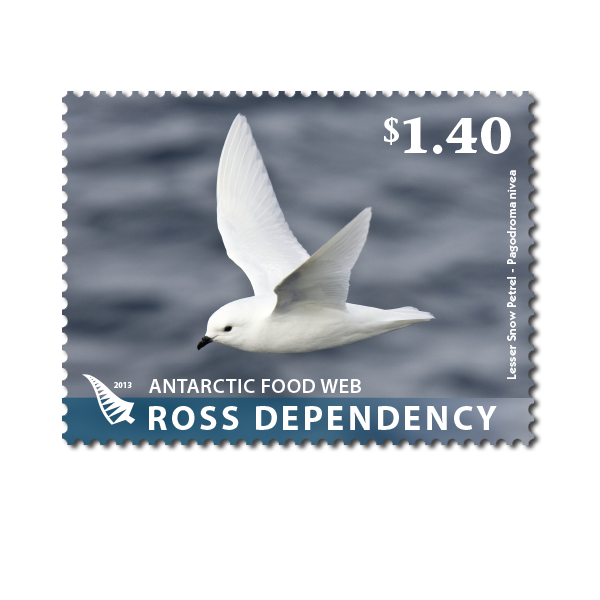 |
Single Stamp |
Single $1.40 'Lesser Snow Petrel (Pagodroma nivea)' gummed stamp. One of only three bird species that breed exclusively in Antarctica, and the only one of its kind with pure white plumage, the snow petrel grows to about 40 centimetres long and can live for up to 20 years. The name ‘petrel’ derives from the story of Peter the Apostle and his walking on water – a reflection of the bird’s appearing to run on the water to take off. |
$1.40 |
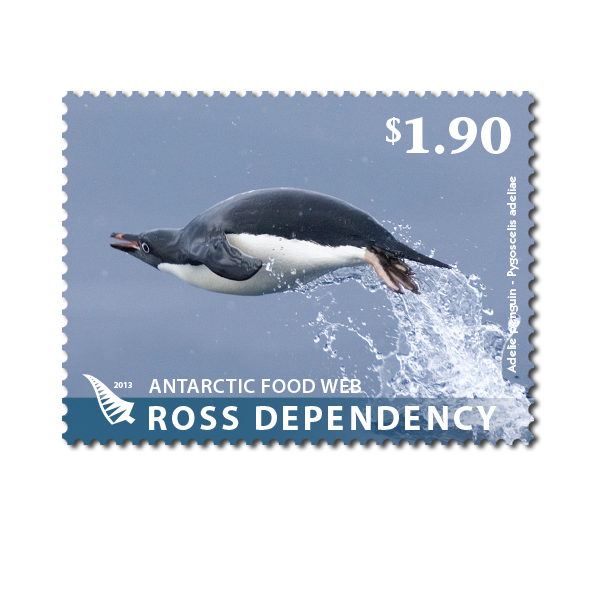 |
Single Stamp |
Single $1.90 'Adélie Penguin (Pygoscelis adeliae)' gummed stamp. The Adélie penguin – named in 1840 by French explorer Jules Dumont d’Urville after his wife, Adélie – is one of only two species found on the Antarctic mainland; the other is the much larger emperor penguin. Easily recognised with its blue-black back and white chest and belly, the Adélie is a highly efficient hunter, with flippers that enable it to dive to depths of 175 metres in search of food. |
$1.90 |
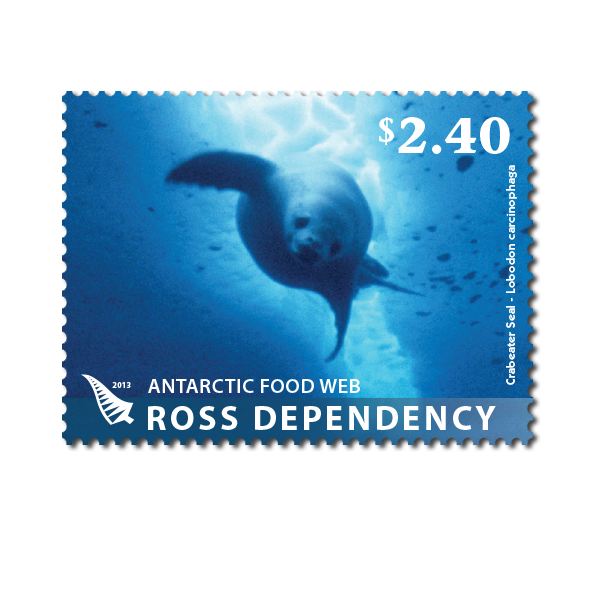 |
Single Stamp |
Single $2.40 'Crabeater Seal (Lobodon carcinophaga)' gummed stamp. The silvery grey crabeater seal is the world’s most numerous seal species. This skilled hunter can reach speeds of up to 25 kilometres per hour, dive to depths of 430 metres and stay submerged for as long as 11 minutes. Its scientific name, which means ‘lobe-toothed crab eater’, refers to its sieve-like tooth structure, which enables it to consume around 20 kilograms of krill every day. |
$2.40 |
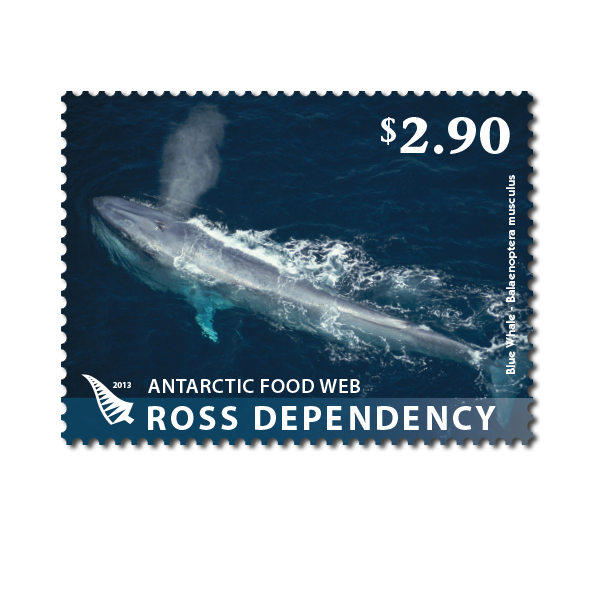 |
Single Stamp |
Single $2.90 'Blue Whale (Balaenoptera musculus)' gummed stamp. At 30 metres long and weighing up to 170 tonnes, the blue whale is the largest animal ever known; its tongue can weigh as much as an elephant! It’s also the loudest, producing 188 decibels of sound that travel hundreds of kilometres underwater. The blue whale’s diet consists almost entirely of krill; lunging open-mouthed into swarms, it consumes up to 40 million a day. |
$2.90 |
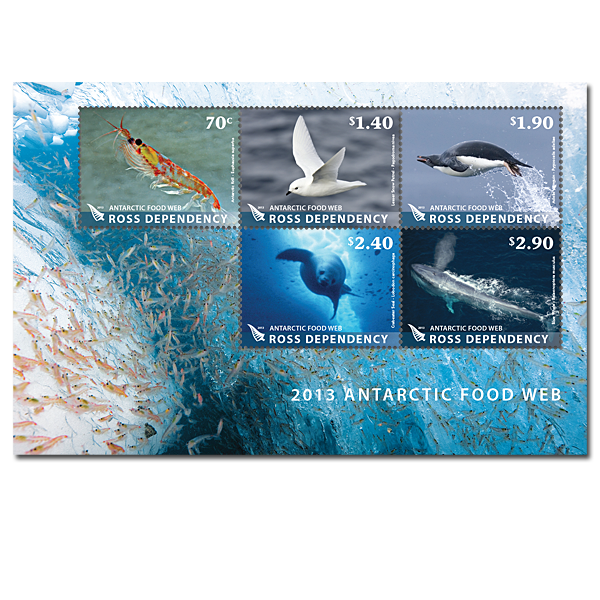 |
Miniature Sheet | Mint, used or cancelled miniature sheet. | $9.30 |
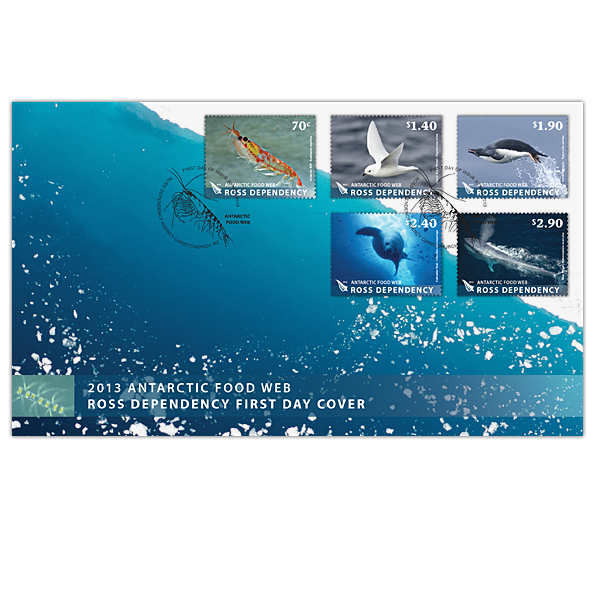 |
First Day Cover | First day cover with stamps affixed. Cancelled on the first day of issue. | $9.80 |
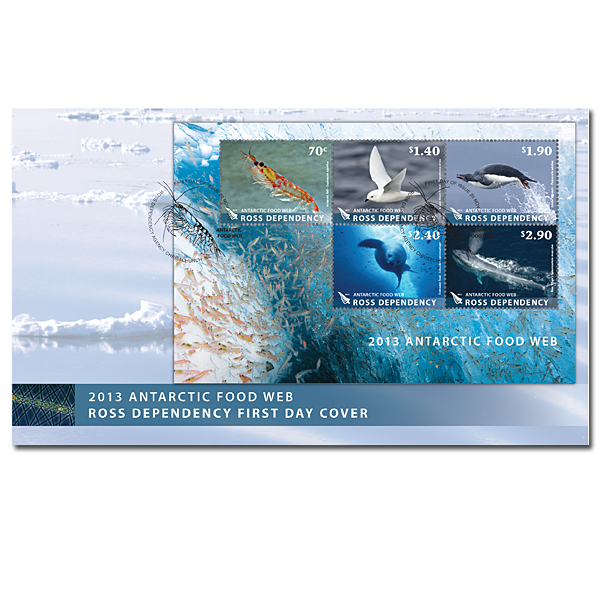 |
Miniature Sheet First Day Cover | First day cover with miniature sheet affixed. Cancelled on the first day of issue. | $9.80 |
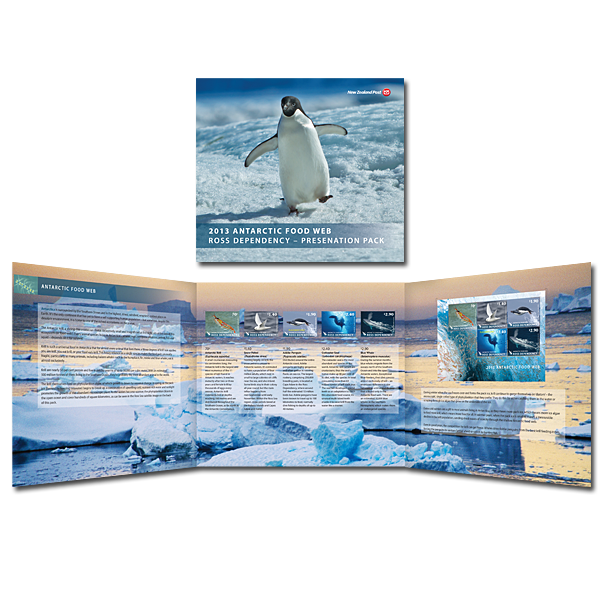 |
Presentation Pack |
The presentation pack included five gummed stamps, the miniature sheet and the first day cover, along with more information about the animals and their extraordinary stories of survival. |
$29.90 |
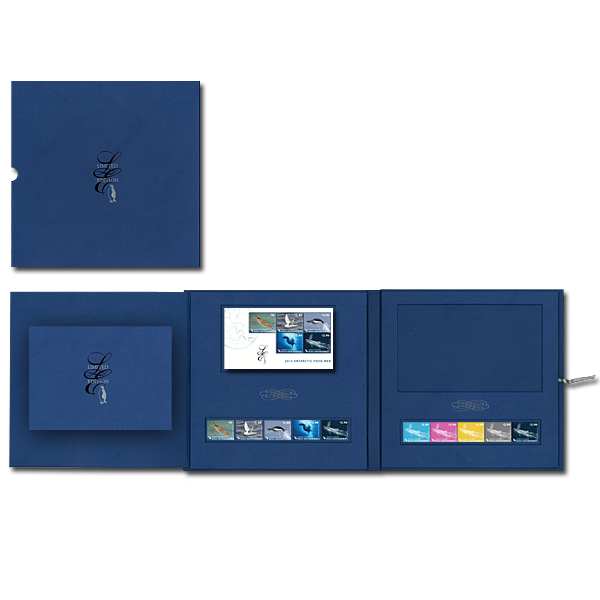 |
Limited Edition |
The limited edition featured exclusive collectable products that could only be obtained by purchasing this limited edition. The exclusive collectables included a specially designed first day cover signed by Rob Fenwick CNZM, Chair of Antarctica New Zealand, a unique numbered imperforate miniature sheet and colour separations of the $2.90 stamp. You could also learn more about the intricacies of the Antarctic food web in a booklet written by Rob Fenwick. There were only 2,000 limited editions produced! |
$135.00 |
(Euphausia superba)
Technical information
| Date of issue: | 20 November 2013 |
|---|---|
| Number of stamps: | Five gummed |
| Stamps and first day covers designed by: | Gregory Millen, Kapiti Coast, New Zealand |
| Denominations: | 70c, $1.40, $1.90, $2.40 and $2.90 |
| Printer and process: | Southern Colour Print Ltd by offset lithography |
| Number of colours: | Four process colours |
| Stamp size and format: | 40mm x 30mm (horizontal) |
| Paper type: | Tullis Russell 104gsm red phosphor gummed stamp paper. |
| Number of stamps per sheet: | 25 |
| Perforation gauge: | 14 x 14 |
| Special blocks: | Plate/imprint blocks could be obtained by purchasing at least six stamps from a sheet. Barcode blocks were available in both A and B formats. |
| Period of sale: | These stamps remained on sale until 19 November 2014. |

